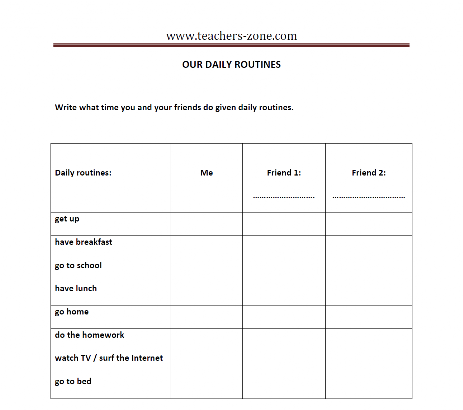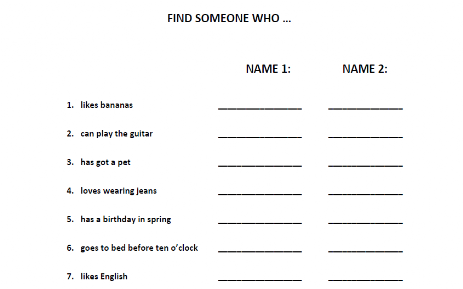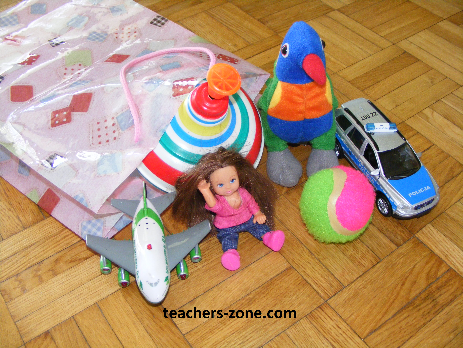SPEAKING ACTIVITIES
ACTIVITIES
MAKE A DONATION
Your donation will directly support us to continue making teaching resources for you.
Thank you, we are greatful for your support.
Mr Crocodile, can we cross the river? is one of the games that my students very often ask me to play. This traditional English game is engaging and perfectly suited to ESL young learners. You can play it with small or big groups, indoors or outside.
Age: 4-10
Language focus:
- clothes,
- colours,
- appearance,
- conditions: If you have got… / you are wearing… / you are…
- questions: Can we…?
Materials: none; optionally (especially playing with the little ones):
- a blue or green scarf,
- a toy crocodile or a headband with a crocodile
- flashcards (colours, clothes, body parts)
Click here to read the instruction to the activity.
Speaking activity for young learners to practise fruit and vegetables vocabulary and questions about their likes and dislikes.
Age: 7-12
Language focus:
- questions: What’s your favourite…?, Do you like…?
- short answers: Yes, I do. / No, I don’t.
- asking and talking about favourite fruit and vegetables
- present simple
Try this Tomato activity to practise asking questions with primary students in a funny way. The Tomato game does not need any preperation or materials. You can organize the whole lesson around this activity or use it as a filler game in your classroom.
Age: 8-12
Language focus: asking questions
Materials: none or a Tomato headband
If your ESL students know lots of animal names, especially pets, but they need to practice the vocabulary in interesting context, try this guessing game ‘What pet have I got?’.
Age: 7-10
Language focus:
- vocabulary:
- pets (in the example: hamster, cat, tortoise, budgie, dog, spider, rabbit, guinea pig, fish),
- body parts (for example: ears, wings, legs, fins, a tail, etc.),
- verbs (for example: sing, fly, jump, climb trees, swim, run, etc.)
- structures:
- Can it …?; Yes, it can. / No, it can’t.
- Has it got…?; Yes, it has. / No, it hasn’t.
- Have you got…?; Yes, I have. / No, I haven’t.
Materials: stripes of paper and pens (optionally: a set of word cards with pets for each pair of students)
Click here to read the instruction to this activity.
This simple speaking activity 'Class Birthday Chart' you can use in many different situations, for example teaching months of the year, as an ice breaker activity or just a spur to talk in English.
Age: 8-10
Language focus:
- months of the year (optionally: ordinal numbers)
- question: When is your birthday?,
- answers: It's in ... (optionally: It's on the ... of ...)
Materials: a printable worksheet (click here to download the worksheet), a pen
Click here to read the instruction to this activity.
An involving activity to encourage students to get to know about their classmates' skills and abilities. It is a great way to practise vocabulary for free time activities and the modal verb 'can'. This task can be used to stimulate students to speak English in class as well as a simple ice breaker activity.
Age: 8-12
Language focus:
- sports and free time activities
- question: Can you …?,
- short answers: Yes, I can. / No, I can't.
- He/She can ..., but he/she can't ... .
Materials: a sheet of paper and a pencil for each student
Click here to read the instruction to this activity.
Practise or introduce some food vocabulary talking with your young students about their likes and dislikes.
Age: 6-10
Language focus:
- any food items
- question: Do you like…?,
- short answers: Yes, I do. Yummy! / No, I don’t.Yuk!
- present simple
Click here to read the instruction to this activity.
Your students will enjoy participating in this super simple and easy to remember rhyme if you use finger puppets to introduce a new set of vocabulary.
Age: 4-8
Language focus:
- any vocabulary (in the example: zoo animals)
- Hello. / Bye, bye.
- Where are you? / Here I am.
- How are you? / I’m fine, thank you.
Speaking activity for young learners to practise parts of the body, numbers and colours. Try this entertaining activity to teach new vocabulary and give your students a lot of joy.
- parts of the body,
- numbers 1-6,
- colours,
- My monster’s name is … / It has got … / It is… /They are…
Speaking and craft activity to practise colours, numbers, jobs, letters of the alphabet and future simple.
Age: 6-12
Language focus:
- lexical items: colours, numbers, letters of the alphabet, jobs,
- question: What’s your favourite…?,
- verb ‘to be’
- future simple: You will be a/an …
Click here to read the instruction to this activity.
This is an enjoyable activity for preschoolers based on 'Five little monkeys swinging in the tree' chant.
Age: 3-6
Language focus:
- counting 1-5
- vocabulary: little monkeys, a crocodile / an alligator, in the tree, swinging, teasing, quiet, to snap, to catch
- grammar: can / can't
Materials: monkey finger puppets, paper tree, a crocodile / alligator toy
Click here to read the instruction to this activity.
How to practise communication skills with ESL kids? Try this activity with your students to practise speaking, listening and writing skills as well as present simple tense, vocabulary for daily routines and telling the time.
Age: 9-12
Language focus:
- vocabulary for daily routines
- telling the time
- Present Simple
Click here to read the instruction to the activity.
The aim of this speaking activity is to practise asking and answering questions in Present Simple. It can be used as an ice breaker activity at the begining of the school year as well.
Age: 8-10
Language focus: Present Simple:
- Do you …? ; Yes, I do. / No, I don’t.
- Have you got …? ; Yes, I have. / No, I haven’t.
- Can you …? ; Yes, I can. / No, I can’t.
Click here to read the instruction to the activity.
To practise question words and structures you should try 'Up Side Down Quiz' with your students.Working in groups children will feel comfortable to speak and have fun. All you need to do this activity is a sheet of paper for each group and pencils.
Age: 10-12
Language focus: making questions to given answers
Materials: a sheet of paper for each group to write down the questions, pencils or pens
Click here to read the instruction to the activity.
Speaking activity to practise short dialogues and teach children toys vocabulary.
Age: 4-8
Language focus:
- any toys (in the example: a ball, a doll, a car, a plane, a parrot, a humming top)
- What's this? / It's a ...
- Here you are. ; Thank you.
Materials: toys, bag
Click here to read the instruction to the activity.




